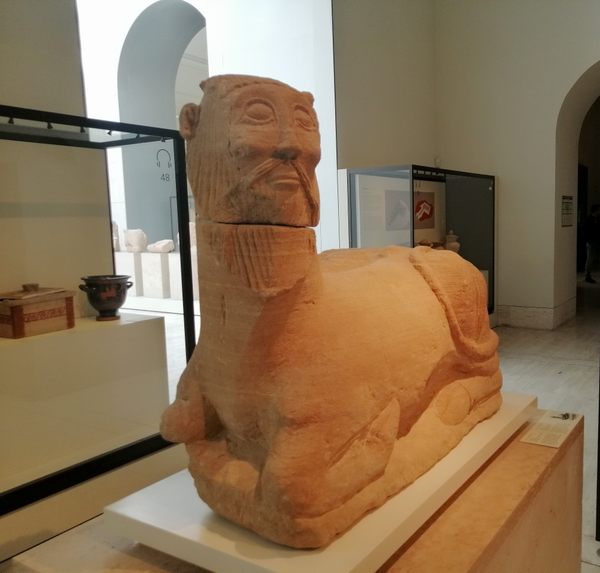This strange limestone sculpture has a prominent place in the collection of Archaeological Museum of Madrid. It has been dated between the fifth and the sixth B.C. and depicts a hybrid creature that has a bull’s body and a human head with animal features.
It was discovered in June 1879 when a resident of Balazote near Albacete, Isidro López, gave the city’s Archaeological Commission a strange figure that was already called “bicha” (a popular word that defines a grotesque and ugly being) for its strange and singular appearance. On a bull’s body (previously thought to be a deer) it has the head of a bearded man turned towards the viewer and slightly raised, with small horns and bull ears. It also has peculiarities of archaic Greek sculpture: hieratic style, enigmatic appearance and hair formed by straight and geometric grooves with Hittite roots. In itself, this also represents a challenge for researchers since it is not in harmony with the styles that prevailed in the Iberian Peninsula. Its meaning and the purpose for which it was sculpted are also not very clear. It is believed to be the personification of a river since in classical Greece Achelous – a divinity represented as an androcephalic bull – embodied the Peloponnese river of the same name and it has been thought that the Bicha’s mustaches draw waves that remind us of water courses, perhaps one near Balazote like Don Juan river. Its smooth back also indicates that it was adjacent to a funerary monument where it perhaps served an apotropaic purpose.
Know Before You Go
Museo Arqueológico Nacional
By tube: L4. Colón and Velázquez stations
By bus: Lines 15,28,53,71 and 203
By Commuter Train: Recoletos station

